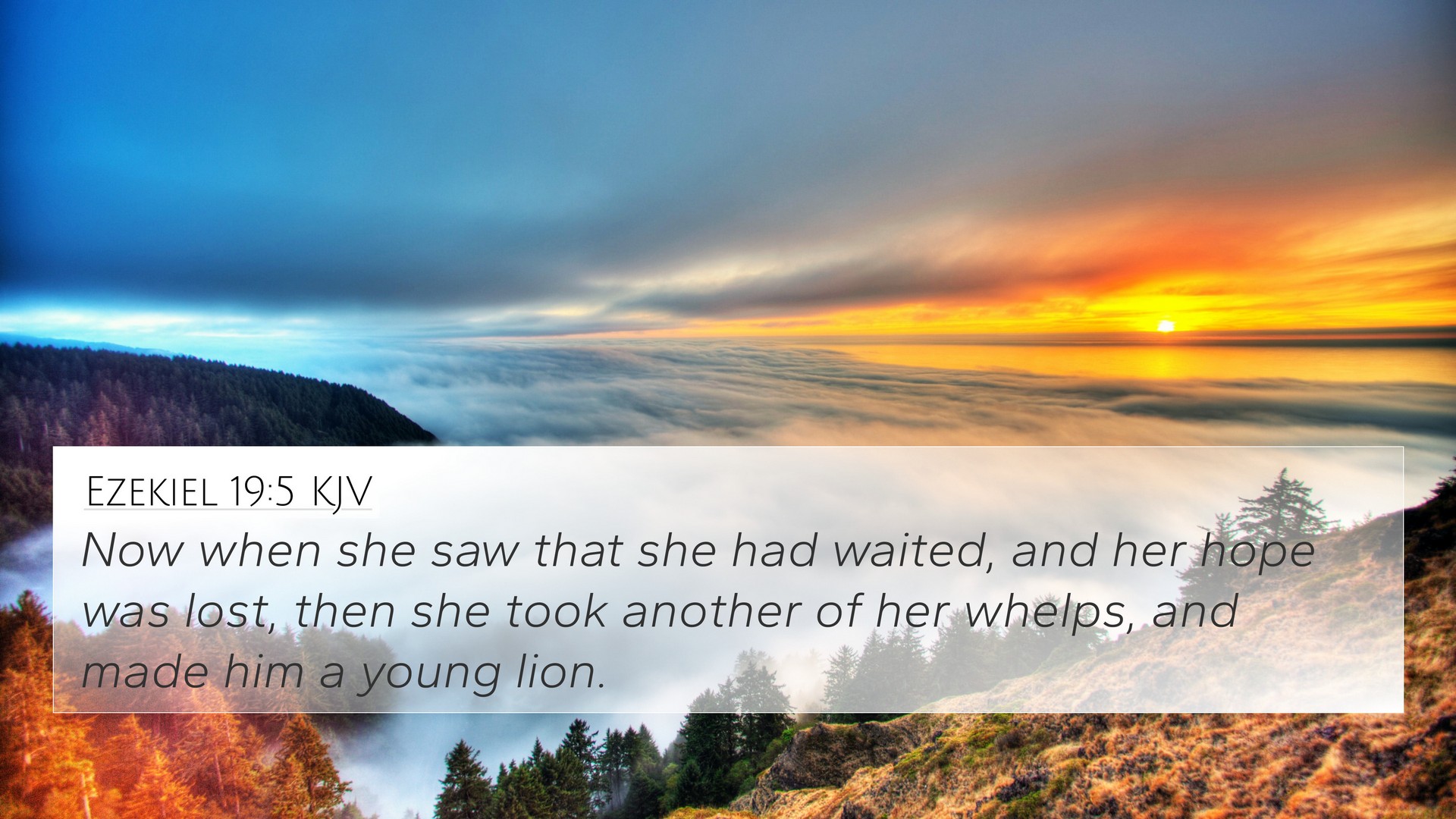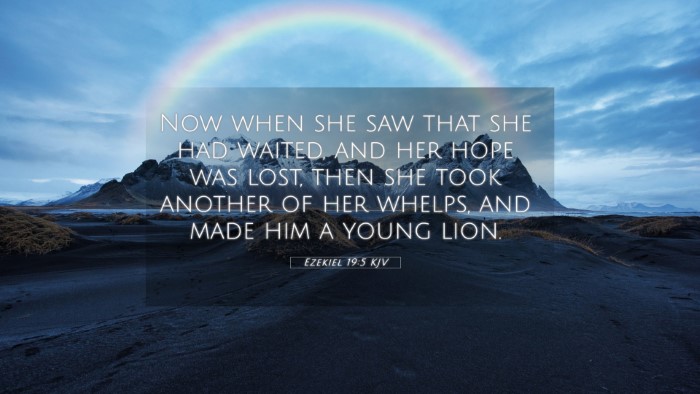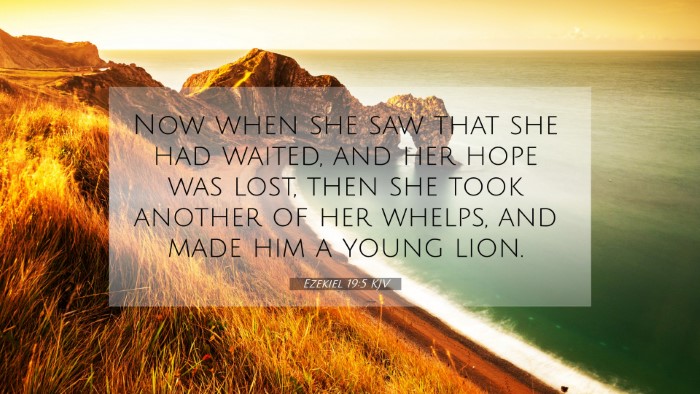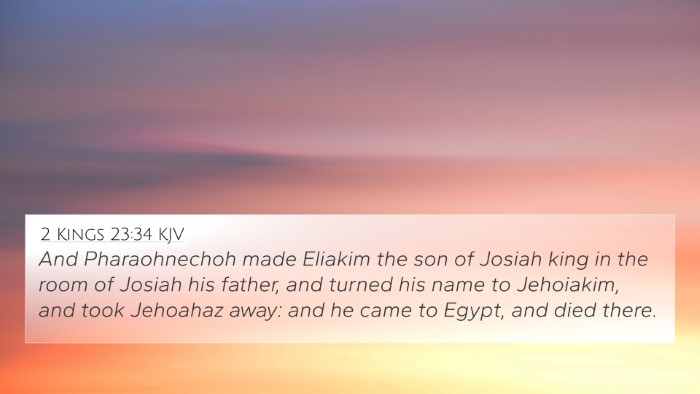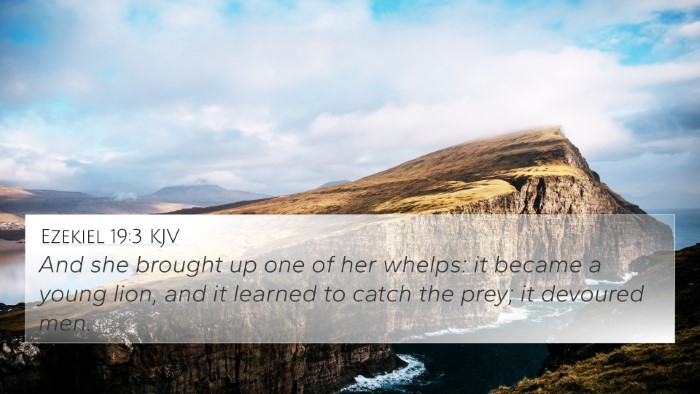Ezekiel 19:5 - Understanding Through Cross-Referencing
Verse: "But when she saw that she had waited, and her hope was lost, then she took another of her whelps, and made him a young lion." - Ezekiel 19:5
Summary and Interpretation
This verse from Ezekiel uses the metaphor of a lioness and her cubs to depict the tragic circumstances surrounding the destiny of Israel. The lioness represents the nation, and through the narrative, the hope and despair of its people are portrayed. The passage encapsulates the theme of lost hope and the consequences of such despair.
Context of Ezekiel 19:5
The context of Ezekiel 19 lies in the lamentation for the princes of Israel. The chapter reflects on the royal lineage and the calamities that befall them, and by extension, the nation. This verse specifically emphasizes the transition from hope to despair, marking the pivotal moments in their fate.
Commentary Insights
- Matthew Henry: He notes that the lioness symbolizes the Jewish nation, emboldened by its leaders but eventually succumbing to despair when those leaders fail. The imagery illustrates the danger of misplaced hope in earthly rulers.
- Albert Barnes: Barnes emphasizes that the loss of hope leads to dire consequences. The whelp that becomes a lion serves to reflect the strength of a new generation, yet it also underscores the cycle of destruction faced by Israel.
- Adam Clarke: Clarke relates the actions of the lioness to God's providence and the outcomes of Israel's disobedience. The "young lion" represents both the potential for strength and the looming tragedy that awaits due to forsaking divine guidance.
Cross References and Thematic Connections
Ezekiel 19:5 can be thematically linked to various other scriptures that address similar themes of hope, despair, and the consequences of leadership:
- Jeremiah 14:19-22: A lamentation that echoes the themes of lost hope and crying out to God in despair.
- Lamentations 3:18: Highlights the feeling of hopelessness felt by the people during the Babylonian exile.
- Psalm 22:1: A cry of despair that resonates with the feeling of abandonment and loss of hope.
- Isaiah 53:5: Touches upon the suffering servant, indicating hope amidst despair and reference to a figurative 'lion.'
- Matthew 23:37: Jesus laments over Jerusalem, reflecting the consequences of rejecting divine guidance.
- John 10:11: Jesus as the good shepherd provides a contrast to the leadership failures discussed in Ezekiel.
- 2 Corinthians 1:20: Offers the reminder that all promises of God are fulfilled in Christ, bringing hope.
Applications and Lessons
This verse teaches about the fragility of hope and the implications of relying on earthly rulers. In a broader sense, it calls for reflection on the nature of leadership and the collective responsibility of a nation towards its God. Believers are encouraged to root their hope in God alone, ensuring that leadership aligns with divine principles.
Further Study and Tools for Cross-Referencing
For a deeper understanding of Ezekiel 19:5 and its connections, consider exploring the following:
- Bible Concordance: Utilize a concordance to find related terms and themes across different scriptures.
- Bible Cross-Reference Guide: These guides help trace thematic connections between verses.
- Cross-Reference Bible Study: Engage in methods for cross-referencing to enhance Bible study.
Conclusion
Ezekiel 19:5 serves as a poignant reminder of the cyclical nature of hope and despair, particularly in the context of leadership and national identity. By engaging with cross-references and thematic studies, readers can gain a more profound understanding of the interconnections within the scriptures.
